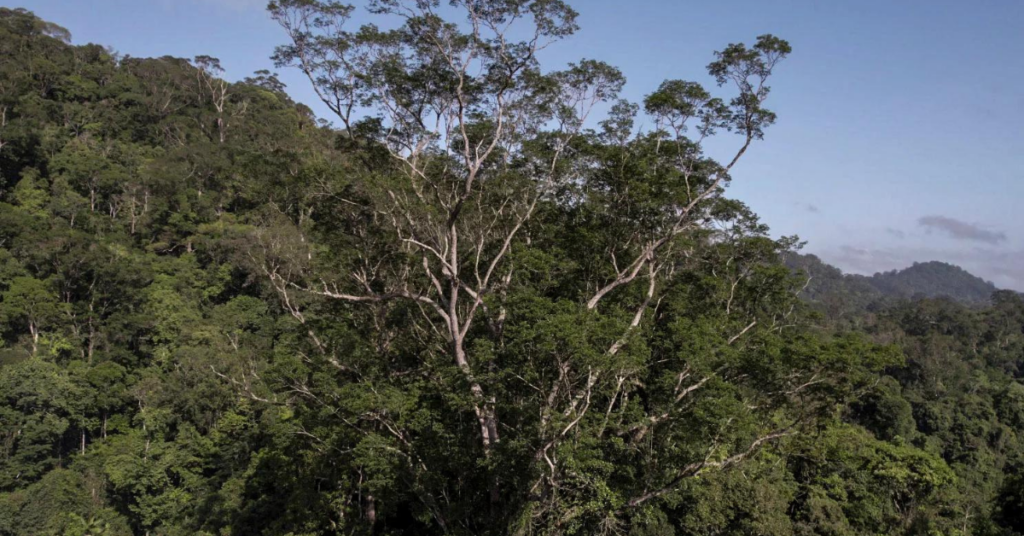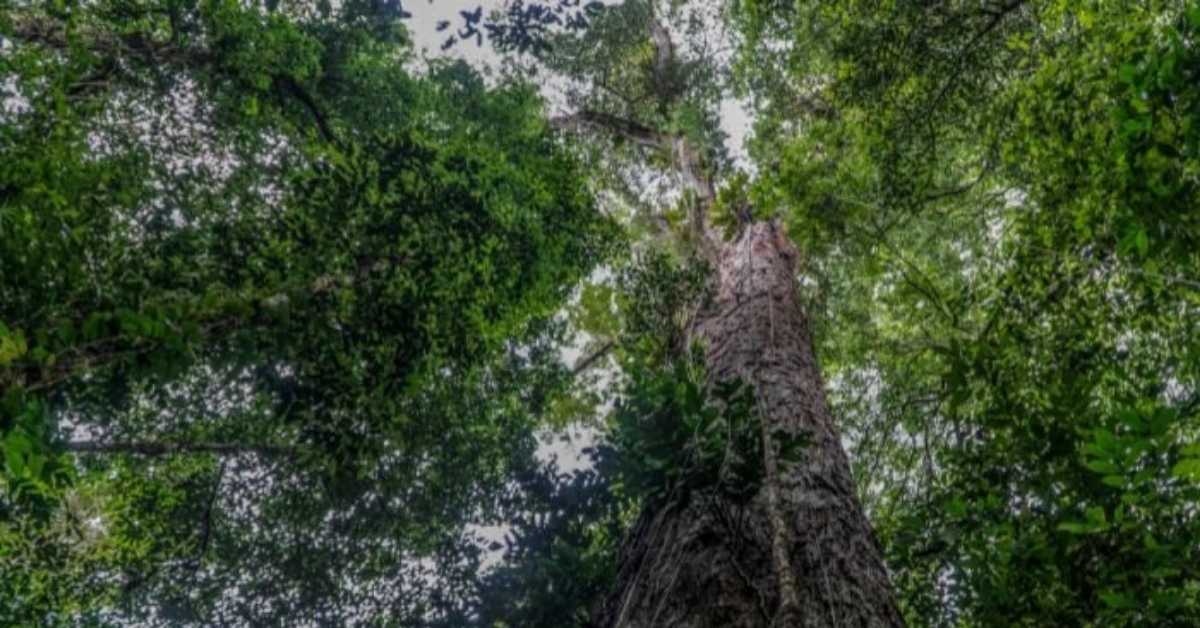After three years of preparation and five expeditions, the tree was located.
It has the footprint of a 25-story building.
In 2019, researchers discovered a massive tree in satellite pictures for the first time.
Scientists have reached the tallest tree ever discovered in the Amazon rainforest, a towering specimen the size of a 25-story structure, after three years of preparation, five missions, and a two-week walk through deep jungle.
The giant tree, whose top juts out high above the canopy in northern Brazil’s Iratapuru River Nature Reserve, is an angelim vermelho (scientific name: Dinizia excelsa) measuring 88.5 metres (290 feet) tall and 9.9 metres (32 feet) in circumference — the largest ever identified in the Amazon, according to scientists.
The massive tree was found in satellite photographs in 2019 as part of a 3D mapping study.
Later that year, a group of academics, conservationists, and local guides set out on an expedition to attempt to reach it. They had to turn back after a 10-day walk across challenging terrain, tired, short on supplies, and with a team member growing sick.
Three further expeditions to the reserve’s remote Jari Valley area, which lies on the border between the states of Amapa and Para, discovered numerous other enormous trees, including the largest Brazil nut tree ever recorded in the Amazon – 66 metres.
Scientists have reached the tallest tree ever discovered in the Amazon rainforest, a towering specimen the size of a 25-story structure, after three years of preparation, five missions, and a two-week walk through deep jungle.

Scientists have reached the largest tree ever discovered in the Amazon rainforest, a towering specimen the size of a 25-story structure, after three years of preparation, five missions, and a two-week walk through deep jungle.
The massive angelim vermelho, however, remained elusive until the September 12-25 mission, when researchers went 250 kilometres (155 miles) by boat up dangerous rivers, followed by another 20 kilometres on foot over hilly jungle terrain to find it.
One of the expedition’s 19 members was bitten by what the team doctor suspects was a dangerous spider.
But it was worthwhile, according to forest engineer Diego Armando Silva of Amapa Federal University, who assisted in organising the expedition.
“It was one of the most stunning sights I’d ever seen. Simply wonderful, “Silva, 33, said to AFP.
“You’re in the heart of a wilderness where humans has never set foot before, surrounded by incredibly ferocious nature.”
After sleeping under the gigantic tree, the crew gathered leaves, soil, and other samples, which will now be evaluated to learn more about the tree’s age — at least 400 to 600 years, according to Silva — why the area has so many large trees, and how much carbon they store.
According to Silva, carbon absorbed from the atmosphere accounts for around half of the weight of the region’s big trees.
Despite their isolation, the region’s giants are threatened.
According to Jakeline Pereira of the environmental organisation Imazon, which helped arrange the trip, Angelim vermelho wood is sought by loggers, and the Iratapuru reserve is being invaded by illicit gold miners famed for causing ecological havoc.
“We were overjoyed to make this discovery,” Pereira explains.
“It’s critical at a time when the Amazon is seeing such alarming levels of deforestation.”
The average annual rate of deforestation in the Brazilian Amazon has surged by 75% in the last three years compared to the previous decade.











